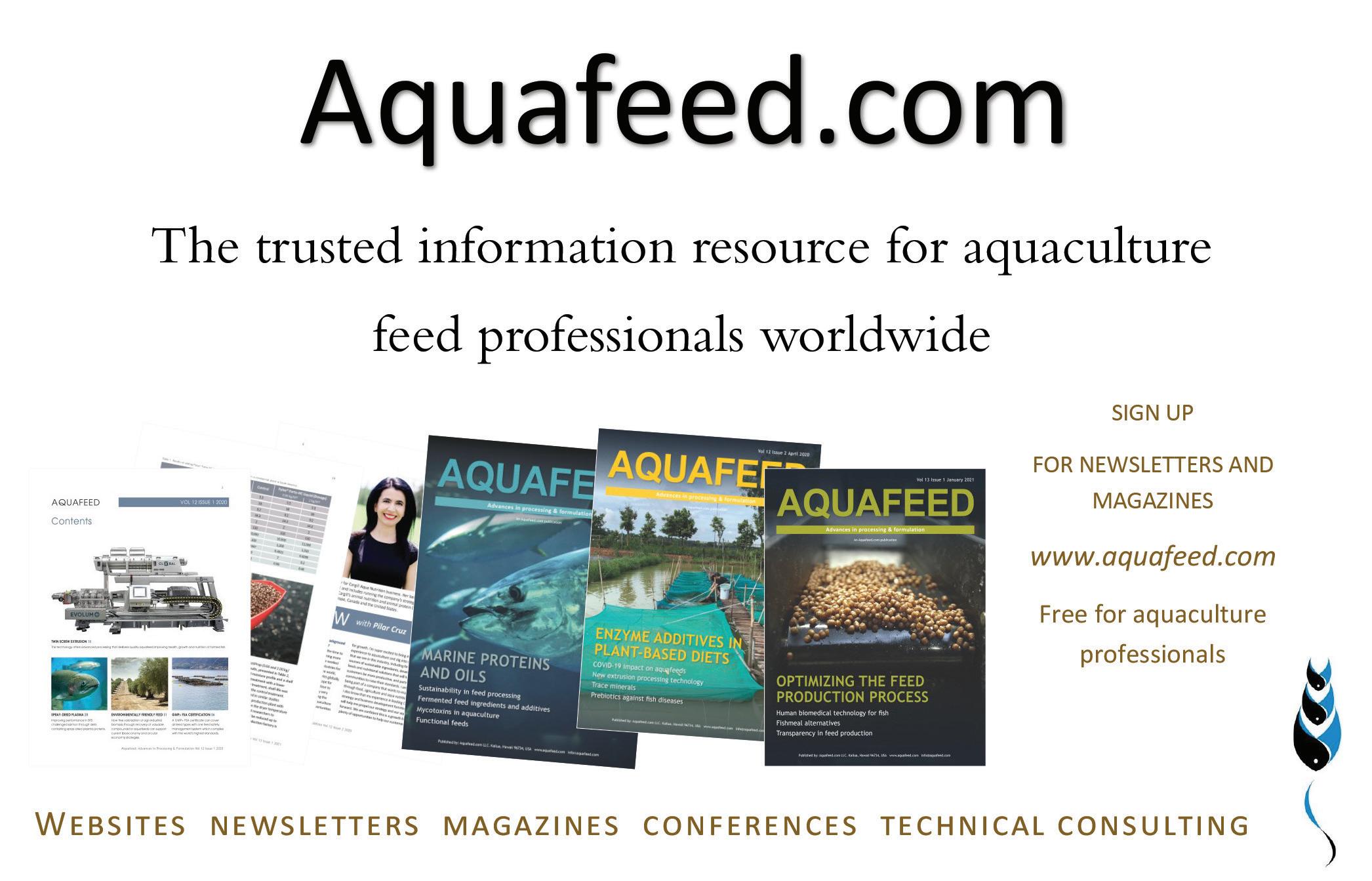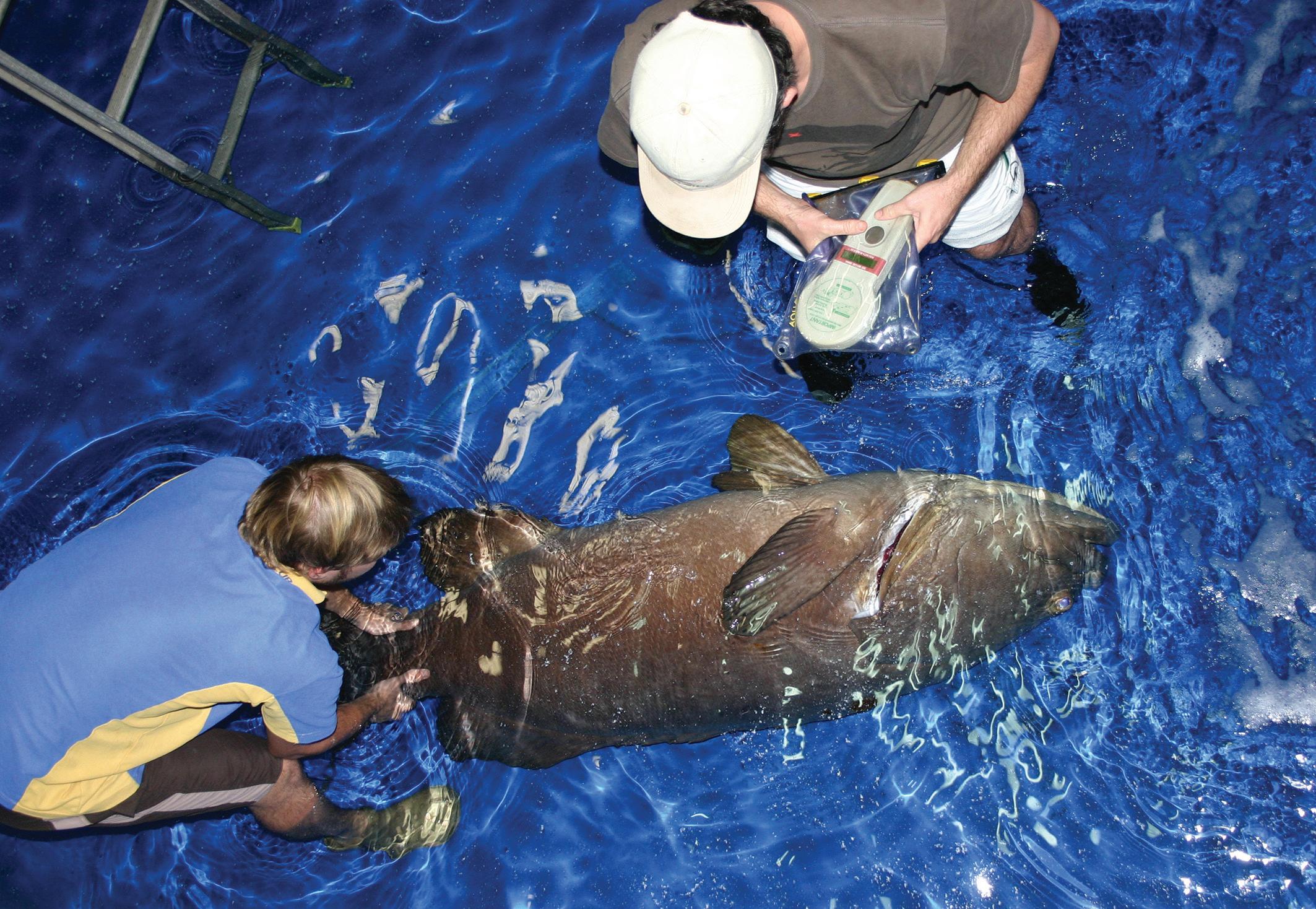
10 minute read
Grouper fingerling production in Australia
Grouper fingerling production in Australia: Challenges and achievements
Richard Knuckey, The Company One
Figure 1. Giant grouper broodstock health check.
Groupers form the basis of a billion-dollar Live Reef Food Fish trade. This trade relies on supply of a diversity of species and remains dependent on grouper and other species sourced from reef systems across SE Asia, the Pacific and Indian Oceans and Australia. Grouper aquaculture has a long-established presence in SE Asia where it is now the major source for several key grouper species. However, species diversity is a major obstacle to aquaculture becoming the dominant source for all groupers and to relieving pressure on reef systems.
Grouper broodstock management and larval rearing is challenging. While grouper species share major challenges such as susceptibility to nodavirus and iridovirus, each species has its own peculiarities in breeding that increases the difficulty to successful fry production. A number of these challenges have been alleviated through the production of hybrid grouper and particularly Epinephelus lanceolatus x E. fuscoguttatus
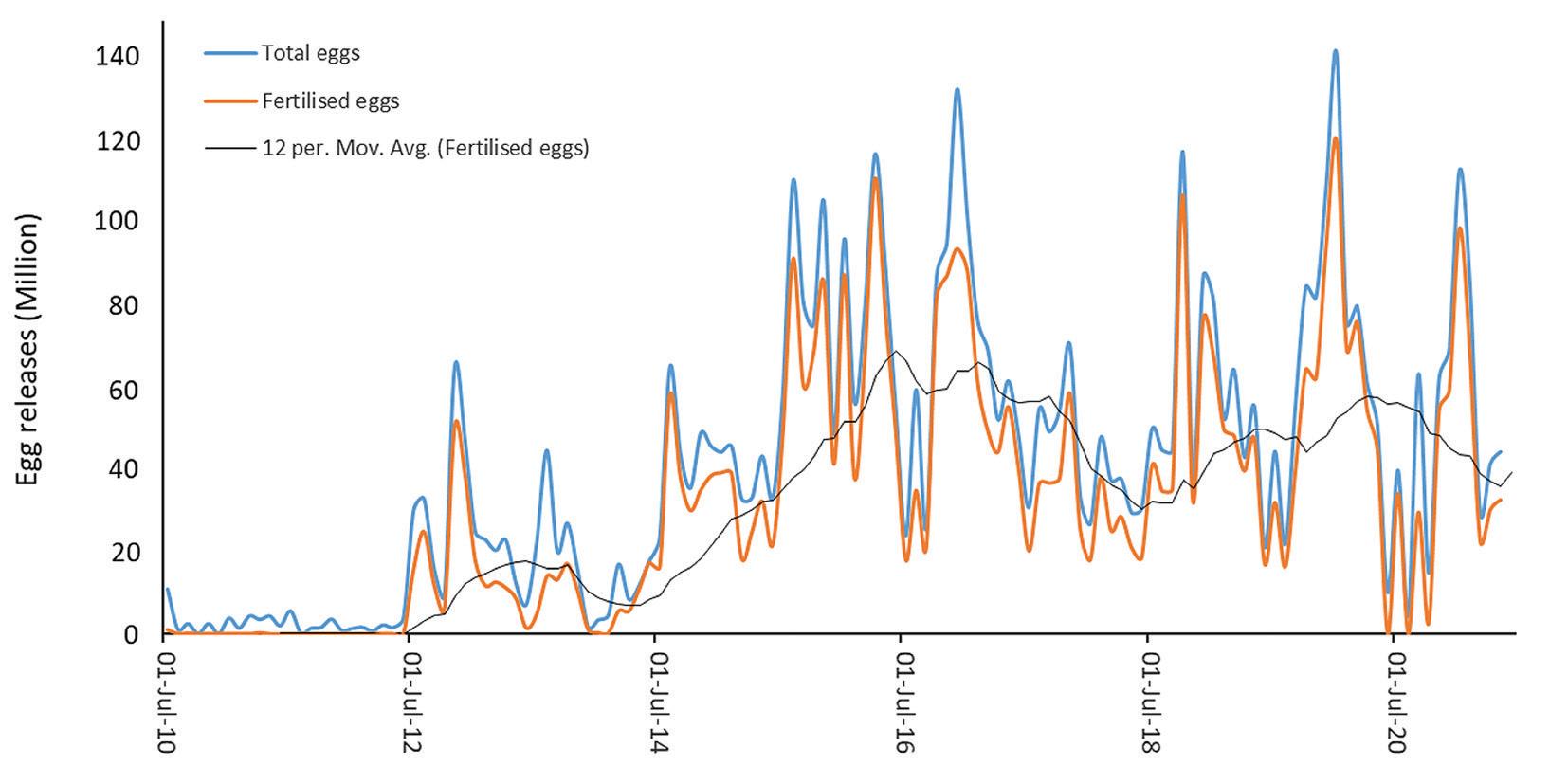
Figure 2. Spawning initiation and maintenance of giant grouper broodstock.
that now dominate grouper aquaculture production. However, these fertile hybrids pose a threat to wild, pure-bred populations as escapees are commonplace. As environmental pressures mount on traditional aquaculture regions, more biosecure and intensive RAS production of grouper is developing. These systems require high-quality SPF fry from a range of grouper species which have not been readily available under the current fry production methods.
Breeding
Groupers are protogynous hermaphrodites, a fundamental consideration in broodstock population management. Social cues and population structure need to be considered and controlled to maintain a breeding population.
Depending on the species, broodstock acquisition and maturation can be major barriers to new entrants. This is especially true for large species such as E. lanceolatus (Fig. 1), a protected species in Australia. In 2010, giant groupers were collected from the wild as small females of 10 to 15 kg and targeted hormone administered for female maturation and production of males. While small egg volumes were released over the first two years there was no fertilization despite female activity toward the targeted males (Fig. 2). Milt was produced in the early males, but it was not until two years that male behavior and fertilization was observed. Through photothermal control, social manipulation and selective introduction of new stock, high fecundity spawning was achieved without the use of hormones to enable continuous monthly fry production for the last 11 years. This is a key requirement for supply of highquality fry to RAS facilities that are not seasonal but require consistent production for system stability.
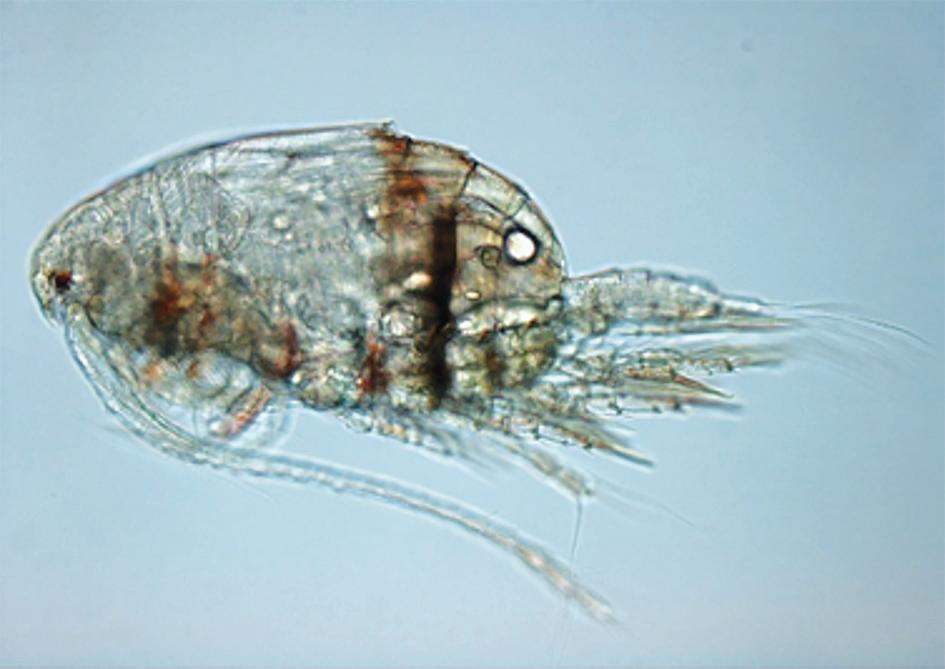
Figure 3. Adult calanoid copepod, Parvocalanus crassirostris.
First feeding
Control of spawning and production of high-quality eggs was the first hurdle to overcome. The next was the sourcing of suitable live feeds. Grouper larvae have a small mouth gape at first feeding and require specialized live feeds. While neonates of ss-strain rotifers (Brachionus rotundiformis) form the basis of the first feed, inclusion of copepod nauplii is vital if
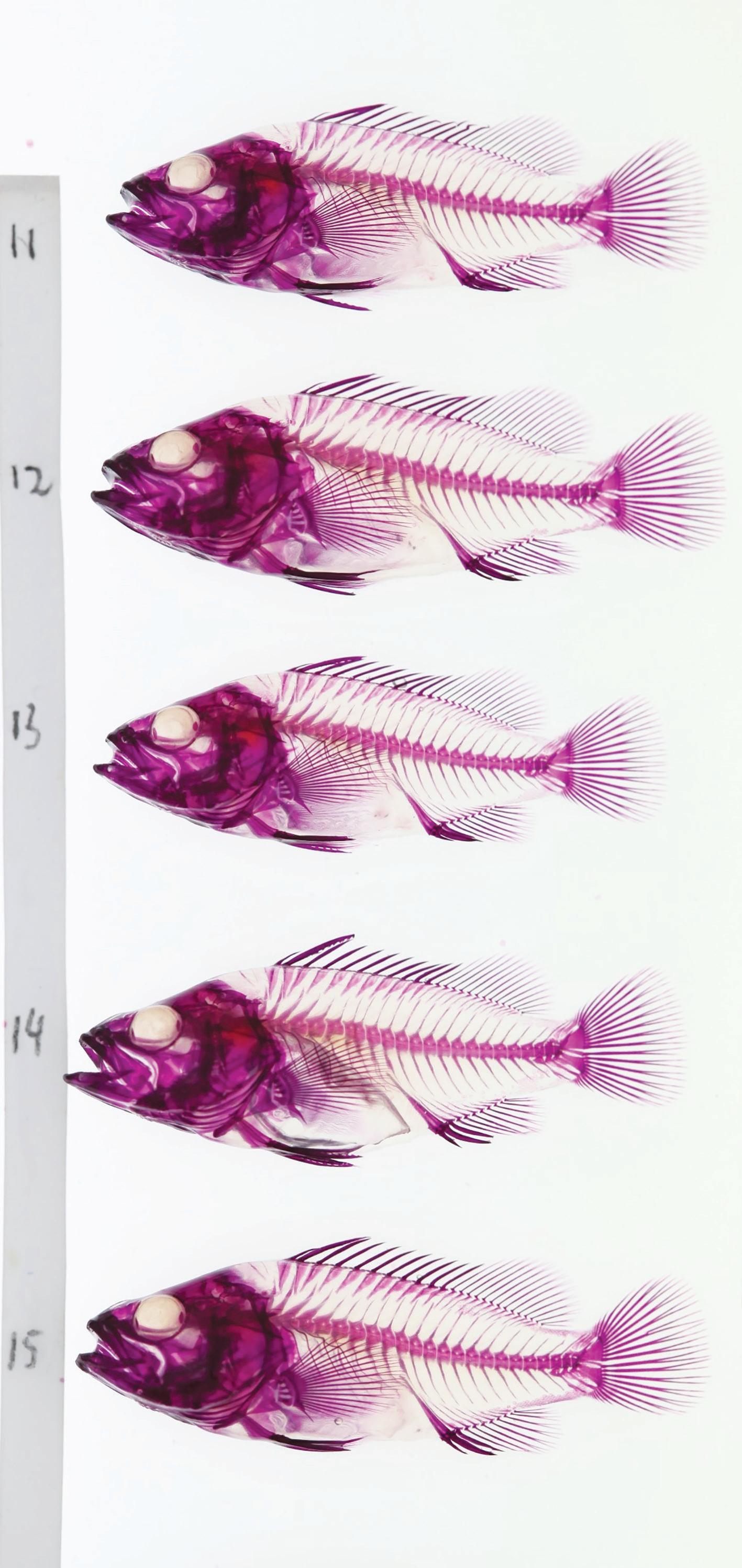
Figure 4. Clear and stained grouper fry for assessment of skeletal development. Figure 5. Fry production of common coral trout (left), giant grouper, tomato hind and speckled blue grouper (right, top to bottom).
good survival and low malformation rates are to be achieved. The impact of inclusion of copepod nauplii at first feeding is beneficial for all groupers but varies depending on the species and is crucial for successful larval rearing of giant grouper. All groupers produce small eggs (around 2,000 eggs/mL) with limited endogenous energy reserves and if first feed is not achieved on day 3 (dph) then a major drop out of larvae from starvation will occur on day 6.
Calanoid copepods are planktonic, and part of the zooplankton mix that grouper larvae would naturally target. Since 2000, we have undertaken research on calanoid copepod culture with an initial focus on Acartia sinjiensis. While a nutritious copepod, their requirement for a complex microalgal diet (Knuckey et al., 2005) and cannibalism of eggs necessitated a search for a more suitable copepod.
Initial efforts were directed at a calanoid species of Bestiolina and later Parvocalanus crassirostis (Fig. 3). The small size of P. crassirostris (~400 µm), its ability to be cultured at relatively high density of over 5 adults/ mL and a very high DHA:EPA ratio of 8 when cultured solely on T-Isochrysis lutea made it an ideal candidate for mass culture.
In SE Asia, wild-harvested copepods are often used later in the larval cycle to offset Artemia use but their real benefit is at first feeding. This requires biosecure copepod production to avoid the introduction of disease. We currently culture P. crassirostris in replicate 10,000 L tanks fed with T. lutea. These copepod cultures are inoculated so that their peak spawning capacity (nauplii production) coincides with first feed (day 3) of a grouper larval run.
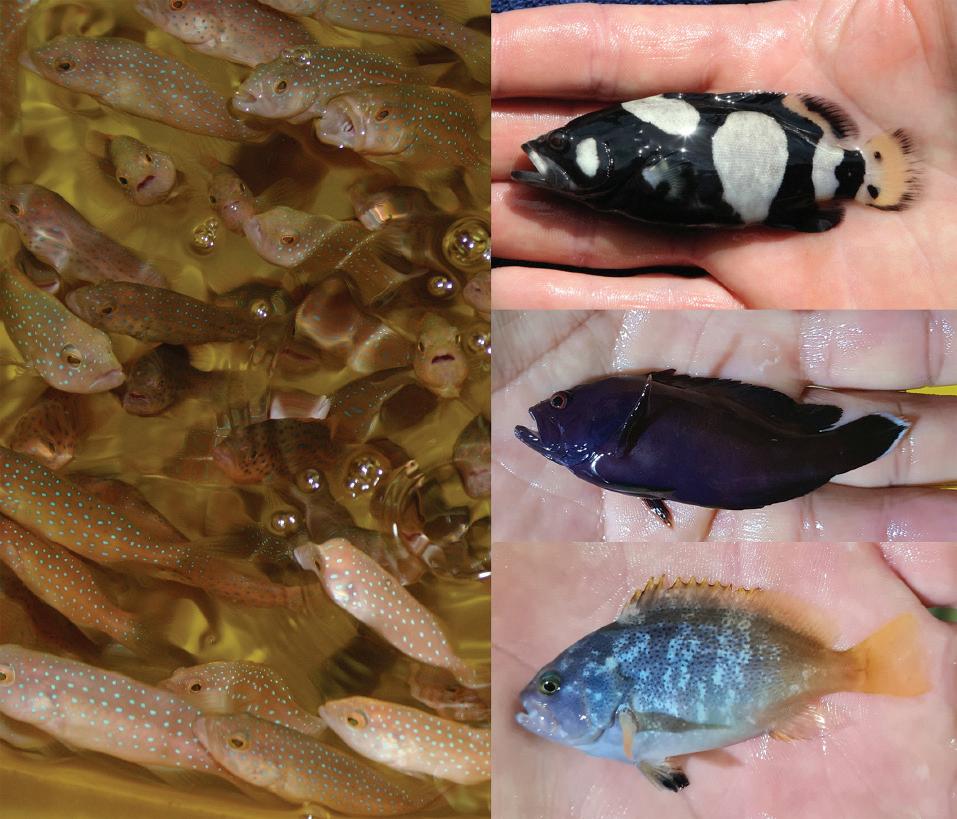
Other challenges
During the hatchery phase, as well as suitable prey selection, there are a range of factors to control to achieve successful fry production. For all grouper, nodavirus is a constant threat and vertical transmission
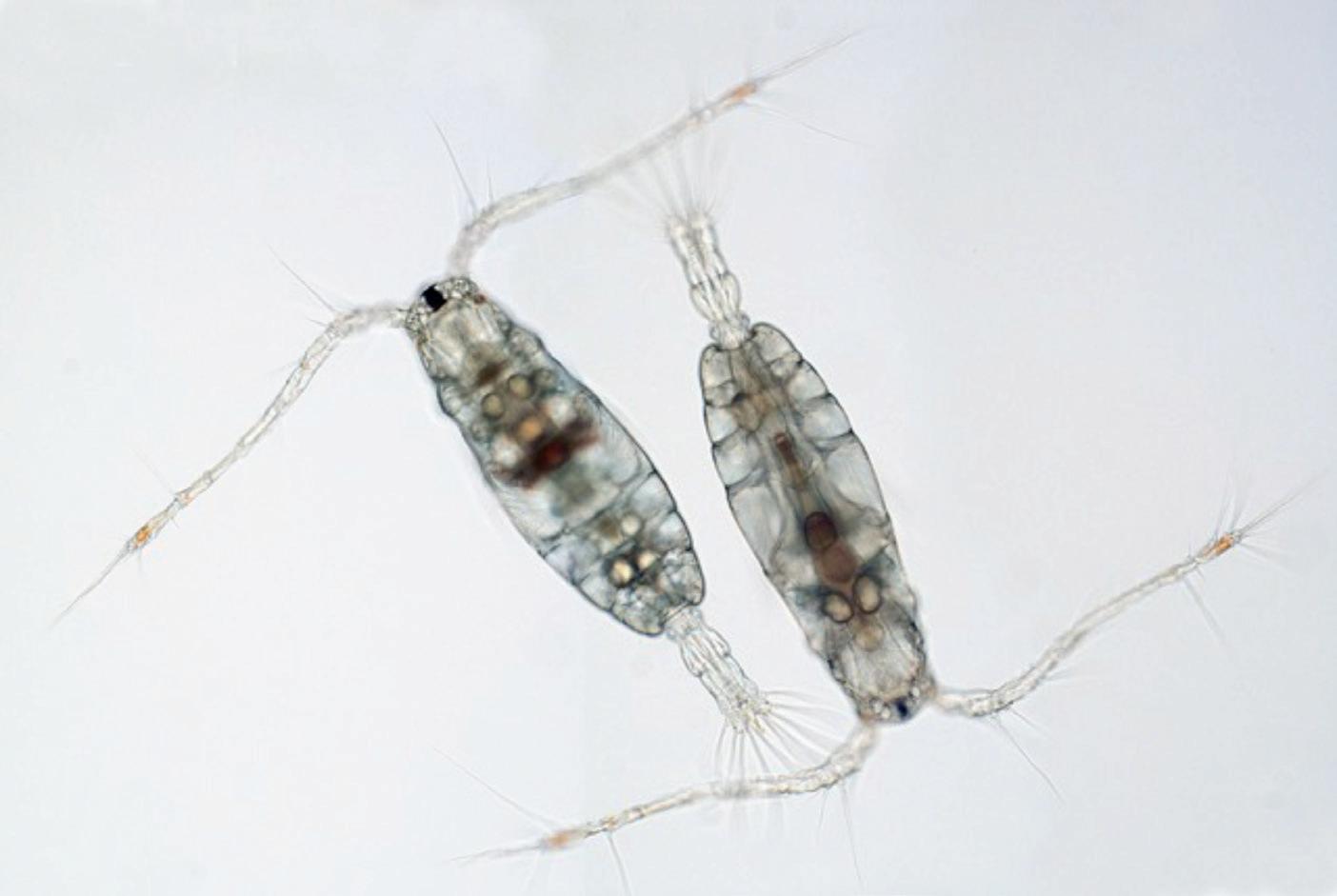
needs to be broken at commencement of larval rearing through ozone disinfection of the eggs. Larval nutrition is met through prey selection, quality live microalgae and enrichment diets and is crucial to minimize developmental malformation which is monitored through clear and staining of larvae (Fig. 4). While control of disease and nutrition is similar for the different groupers, physical factors such as lighting intensity and duration, aeration pattern and flow, swim bladder inflation window and weaning protocols vary between the species.
While grouper aquaculture is referred to in a general term, the operation of a multispecies grouper hatchery of multiple genera is particularly challenging. Our current production is focused on pure-bred giant grouper which is the most challenging species for larval rearing. Recently, both common coral trout (Plectropomus leopardus) and speckled blue grouper (E. cyanopodus) have entered commercial production while tomato hind (Cephalopholis sonnerati) is a research species under development (Fig. 5). Most of our fingerling production is exported to SE Asia with a smaller supply to farms in Australia where the giant grouper has proven to be an excellent aquaculture species in both RAS and pond culture.
FEEDING THE BLUE FUTURE
On demand supply
contact us at post@cfeed.no
Easy to use Biosecure & reliable
The live feed for optimal larval growth and quality
Optimal nutrition
References
Knuckey, RM, Semmens, GL, Mayer, RJ, Rimmer, MA. 2005. Development of an optimal microalgal diet for the calanoid copepod Acartia sinjiensis: Effect of algal species and feed concentration on copepod development. Aquaculture 249, 339 – 351.
Richard Knuckey
Managing Director The Company One, Australia E: rknuckey@thecompanyone.com
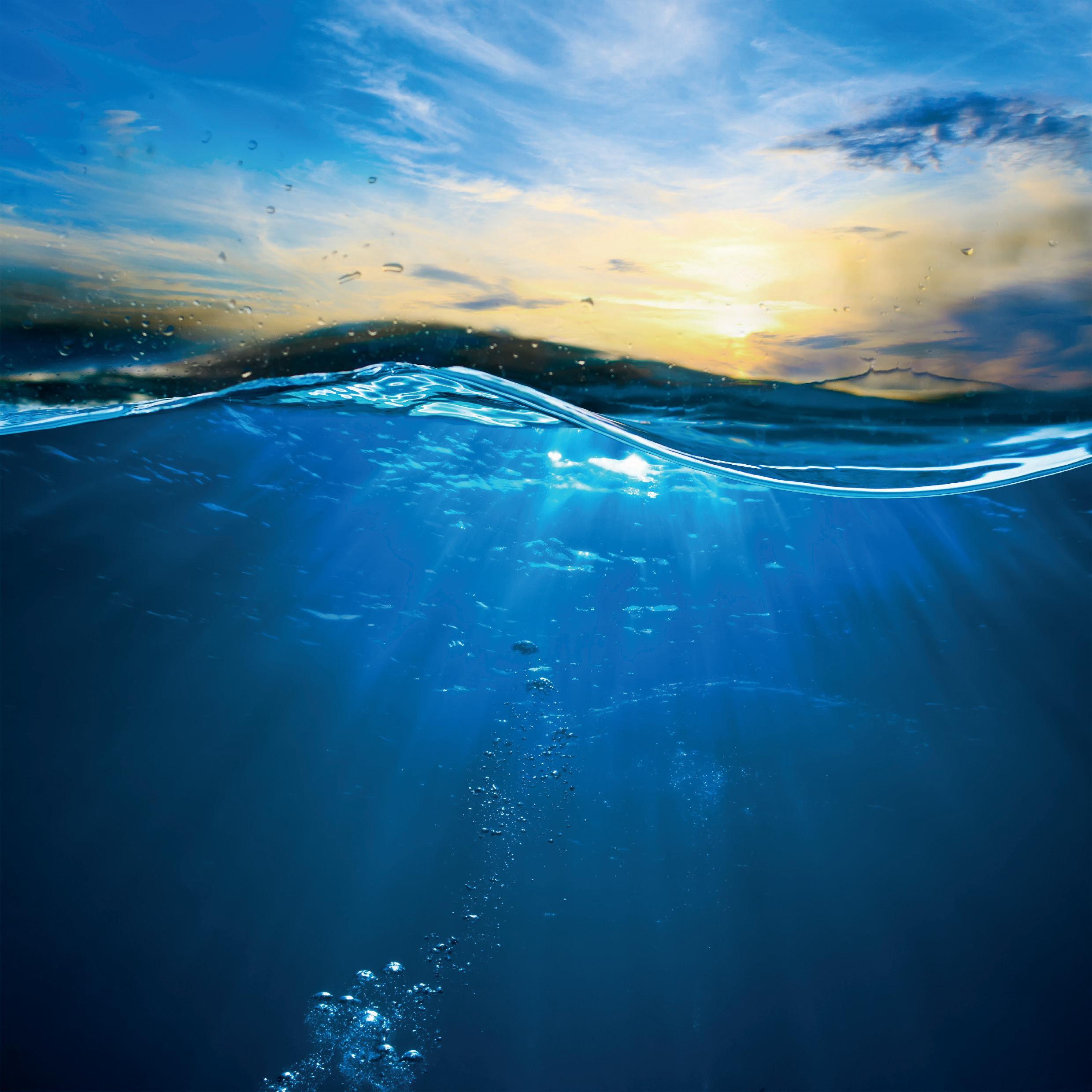
Developments in aquaculture from BLUEGent
Filip Velghe
Platform Manager BIOMARES, Ghent University Hatching tomorrow’s Blue Bioeconomy
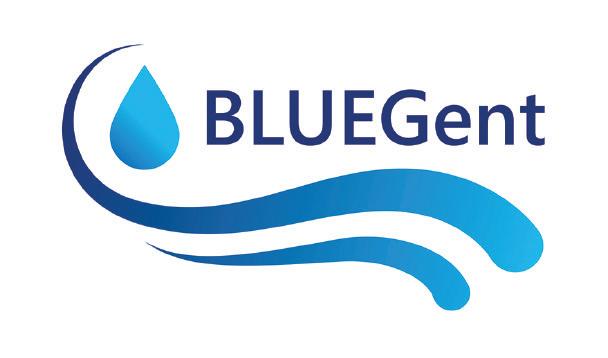
In our endeavor to evolve towards a more sustainable society that is independent of non-renewable resources, the Blue Bioeconomy is expected to play a key role in the near and far future. Our marine environment, including coastal areas, open seas and deep-sea environments, is the biggest ecosystem on the planet and harbors a vast, and until now, mostly untapped potential of biomass, organisms and molecules. This importance has recently been confirmed again by the European Commission as being essential to achieving the objectives set out in the European Green Deal. And although aquaculture until now has mainly been focusing on food (and feed) production, it is also expected to play a pivotal role in the rollout of the Blue Bioeconomy, as the latter relies on a constant and qualitative supply of sustainably sourced and produced biomass.
Especially macroalgae, or seaweed, are gaining much interest from a bioeconomic approach. First of all, their high biomass production rate combined with the cultivation in open sea can heavily reduce the pressure on land-based biomass from agriculture and forestry. Further, the chemical composition of macroalgae and the versatility in application potential is what really makes seaweed high-potential biomass.
Novel compounds are continuously being discovered or produced with high-value applications in the food, feed, medical, cosmetic, nutraceutical and agricultural sectors. Currently, more than 95% of all European seaweed production originates from wild harvesting, and also most of the seaweed aquaculture projects still rely on seeding material obtained from wild populations. If Europe wants to build out a sustainable and reliable seaweed-based Bioeconomy, this approach will need to change drastically, and this is where hatcheries are bound to play a key role. We need to move away from relying on wild seed material, by selecting, optimizing and domesticating high-potential seaweed species and strains and controlling their life cycle to become independent of seasonality.
A first important step is already being taken by scientists from BLUEGent (Ghent University) in the BlueMarine³.Com project together with DEME, Colruyt Group, Sioen Industries, Aquacultuur Oostende, IMAQUA and Proviron. In this project, funded by the Flemish government through Flanders Innovation and Entrepreneurship (VLAIO) and facilitated by the Blue Cluster program, the life cycle control of five seaweed species (Saccharina latissima, Undaria pinnatifida, Porphyra/Pyropia, Palmaria palmata and Ulva rigida) is optimized with regard to performance and characterization of genomic diversity. Emphasis is also placed on developing bio-based and biodegradable seaweed cultivation substrates and optimizing seeding procedures for successful cultivation at open sea. I am confident this is only a first step in an emerging subsector of the hatchery industry in Europe (and beyond), with strain selection activities also focusing on improving the yield and composition of macroalgal biomass.
But hatcheries are not only expected to contribute to the success of the Blue Bioeconomy, ideally, they will also benefit from new developments. In this context, bioprospection for novel (micro)organisms, biochemical compounds and bio-actives offers a huge opportunity to improve the efficiency of many hatchery management processes. A lot of bio-active compounds sourced from ocean-based organisms have antiviral, antibacterial or other disease-suppressant properties, and when added to the feed or process water could radically contribute to a better survival rate of juvenile aquaculture species, be it fish, crustaceans, mollusks
or even seaweed. In an effort to move away from live feed as microalgae, which is often costly and laborintensive, single-cell proteins containing microbialbased health-promoting bio-actives could provide a feasible alternative with added benefits. Finally, a better understanding of the interaction between microbiomes and the aquaculture host species through a metagenomics and machine learning approach will both benefit the hatchery and aquaculture efficiency and provide new insights with potential for use in emerging biorefinery applications.
With the launch of the new IRF (Industrial Research Fund) platform BIOMARES (short for ‘Biorefining of Marine Resources and Marine Bioactives’), five Business Development Centers of the Ghent University have joined forces to leverage on their existing expertise and accelerate the development of a sustainable Blue Bioeconomy. BLUEGent is at the heart of the BIOMARES platform and brings expertise on aquaculture (including hatcheries), blue biotechnology, microbiome management, bioprospecting and marine ecology. To fully exploit the marine potential for the Bioeconomy, this expertise is complemented by End-of-Waste (resource recovery and novel fermentation approaches), CropFit (biostimulants, biofertilizers and biopesticides), BioMolecules (microbiology and microbiome management, chemical modification, water purification and desalination) and ChemTech-LS (biomaterials, chemical modification and antifouling polymers). The aim of BIOMARES is to interconnect Ghent University’s expertise in the field of marine biorefining and set up multidisciplinary research initiatives together with key industrial players to facilitate and accelerate the rollout of a sustainable Blue Bioeconomy. In this context, an industrial board and network will be set up to optimally link with industrial partners active in aquaculture and fisheries, bio-economy, agrochemicals, food (additives), cosmetics, pharmaceuticals and polymers. Several networking events will be organized to assess new opportunities and share market insights. Interested companies and organizations are warmly invited to contact filip.velghe@ugent.be to discuss joint initiatives on research and valorization opportunities within the marine biorefinery value chain.
